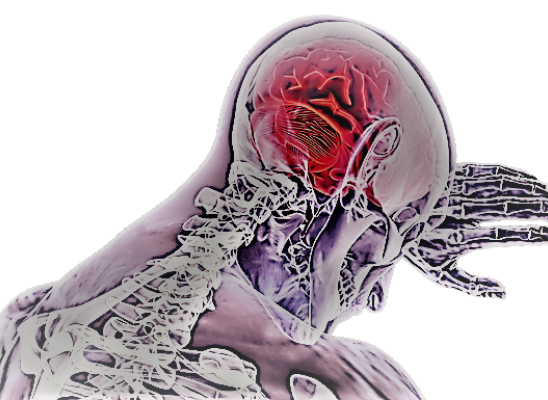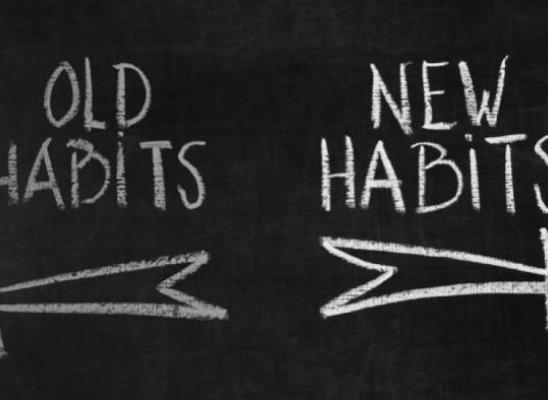Finding Your Triggers: How Mindfulness Can Help You Understand Why You Pull

Online test
Find out the severity of your symptoms with this free online test
Trichotillomania, commonly referred to as “trich” or hair pulling, can feel like an unstoppable urge to pull that sometimes happens before you even realize it. A moment of zoning out, and suddenly you have a pile of hair, and you're left wondering why it happened – again. For many people who live with this body-focused repetitive behavior (BFRB), the compulsion seems to take over before there’s even time to notice what triggered it. And that’s where mindfulness can help.
Understanding Mindfulness
You’ve probably heard the expression “being in the here-and-now”. Essentially, that’s mindfulness.
More specifically, mindfulness is the practice of paying attention to the present moment with curiosity and without judgment. It’s about tuning into your thoughts, feelings, body sensations, and environment as you’re experiencing them. It’s kind of like hitting the pause button on what’s happening around you to check in with yourself.
Why Mindfulness Works for Hair Pulling
While you may sometimes be completely aware of your hair pulling, for many people , their hair pulling happens before they even know it. Hair pulling often happens in an automatic or dissociative state like watching TV, scrolling on our phone, or lost in thought. It can also be a way to self-soothe during stress, boredom, anxiety, or even when we’re tired or overstimulated. But we usually don’t realize the pattern until after the behavior has already happened. This automatic style of pulling is a phenomenon often described as a “trance” or “trance pulling”.
Mindfulness helps you to catch those triggers before they launch a full-blown pulling episode. Mindfulness helps you tune in to your urge to pull and gives you a chance to respond rather than simply react. In that way, mindfulness helps put you back in control so that you can decide what action to take. Having this clarity in the moment can help you identify the often subtle emotional and physical triggers that can lead to a pulling episode and allow you to respond in healthier ways. Practiced over time, this increased awareness helps strengthen the connection between your triggers and your actions, giving you space to choose a healthier response.
Mindfulness is also a kinder, gentler approach to caring for yourself. Mindfulness is not about self-blame or shame. It’s about learning to understand yourself with compassion and kindness. This approach can make a huge difference in loving yourself and giving yourself grace, especially if you’ve struggled with feeling guilt or ashamed about your hair pulling in the past.
Mindfulness Strategies
Mindfulness is not a single strategy. Rather, there are a number of mindfulness-based techniques that can help you identify your triggers and respond with more awareness and control. Not every strategy works for every person. It’s important to find the ones that work best for you. Here are some mindfulness strategies to consider:
Do A Quick Body Scan
A body scan is a simple way to check in with yourself physically and emotionally. Try it few minutes each day, especially during times when you’re most likely to pull. Find a quiet spot, sit comfortably, and close your eyes if that feels comfortable. Slowly bring your attention to each part of your body, from your toes to your head. Notice any tension, sensations, or urges. If you feel the urge to pull, pause and breathe deeply for a moment. This practice helps you catch cues before they lead to a pulling episode.
Mindful Journaling
Journaling with a mindfulness approach is a great way to reflect upon your experience without judgment. When you feel the urge to pull or after a pulling episode, take time to reflect:
* What was happening around you?
* What were you feeling?
* What thoughts were running through your mind?
* What did your body feel like?
This reflection builds awareness and helps you stay curious rather than critical. A journal also gives you a place to look back at these experiences. You may notice certain themes or patterns that can help you implement helpful coping strategies.
Practice Mindful Breathing
Mindful breathing is a powerful tool that has been shown to help in managing trich. This technique focuses on the sensation of the breath as you breathe in and out. By consciously focusing on your breathing, you can become more aware of your thoughts and feelings in the moment, rather than simply focusing on the urge to pull. Mindful breathing is a practical tool because it can be done almost anytime anywhere and can help reduce the stress and anxiety that can trigger a pulling episode.
Use Sensory Distractions
Mindfulness can also help you redirect your focus away from your hair with the help of sensory distractions. Keep a small, tactile object like a fidget toy, a smooth stone, or a piece of textured fabric nearby. When you notice the urge to pull, engage with your sensory object instead. Pay attention to how it feels in your hand. This strategy grounds you in the present moment and keeps your hands busy while distracting from the urge to pull.
Practice Self-Compassion
One of the hardest parts of trich is the shame that often comes with the pulling. It’s easy to blame yourself, which only serves to erode your self-esteem. Extending care and compassion to yourself can challenge the shame and boost your confidence and self-esteem.
Mindfulness is rooted in self-compassion. Practicing being kind to yourself and acknowledging your worth can help improve self-compassion and reduce self-criticism. Self-care practices like mindfulness meditation, relaxation, and positive affirmations, can help you cope with urges to pull and manage stress more effectively. Caring for yourself is also a great reminder that you are indeed worthy of kindness, care, and compassion.
The Bottom Line
Mindfulness is not about stopping the urge to pull immediately. Rather, it’s about cultivating awareness about when and why it happens so that you can choose healthier coping strategies. Awareness is a key step in healing and mindfulness is a powerful tool to add to your recovery toolbox.
Stay curious, be kind to yourself, and keep noticing the little things. You might be surprised at what you learn.
Mindfulness is just one of many tools used to manage trich. For most people, a comprehensive, tailored treatment approach is most effective in achieving reduction in pulling. If you want to learn more about approaches strategies that can help you manage your hair pulling, a therapist can help.
At Trichstop, we have a team of experienced therapists ready to help you take the next step towards healing. And online therapy makes getting help comfortable and convenient. When you’re ready, there is help and hope waiting for you.
References
1. Devereux, C. (2023, February 10). Trichotillomania: Understanding, managing, and loving yourself – Hair health essentials. Hair Health Essentials – Better hair days are ahead. https://www.hairhealthessentials.com/trichotillomania-understanding-managing-and-loving-yourself/
2. Meharg, T. (2025, May 17). Understanding mindfulness practices for treating trichotillomania. tricotilomania.org. https://www.tricotilomania.org/alternative-treatments-mindfulness-practices
3. Trichstop.com. (2024, August 29). Cultivating Self-Compassion After a Relapse: A Mindfulness Exercise [Video]. YouTube. https://www.youtube.com/watch?v=GsU-wKXBFsE
Online test
Find out the severity of your symptoms with this free online test
Start your journey with TrichStop
Take control of your life and find freedom from hair pulling through professional therapy and evidence-based behavioral techniques.
Start Now



